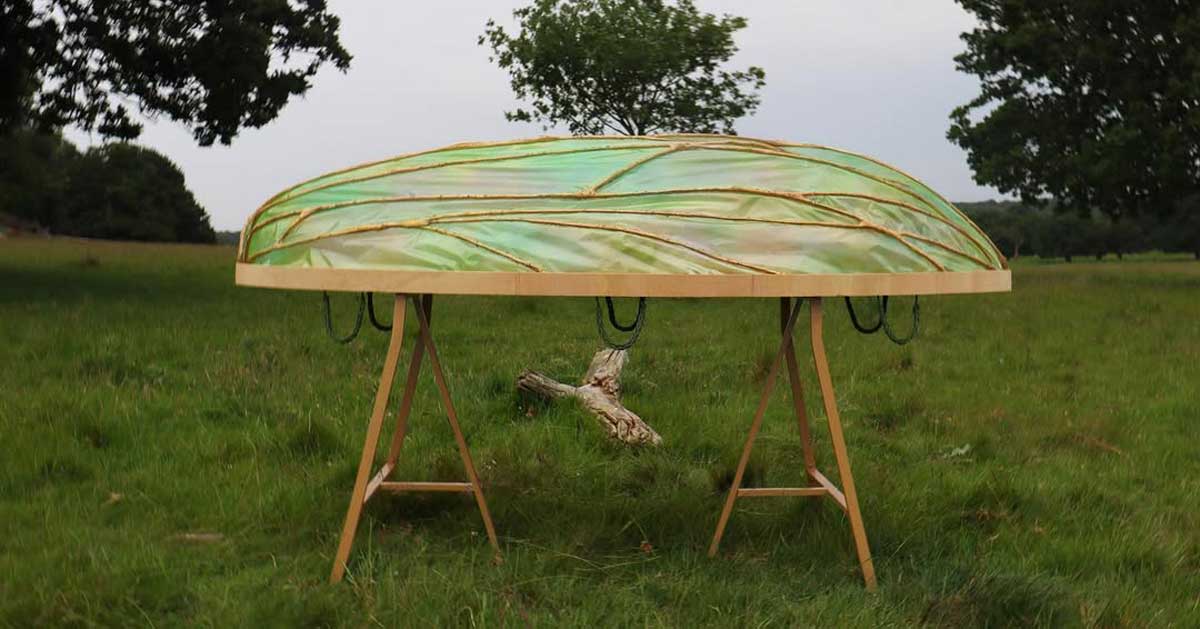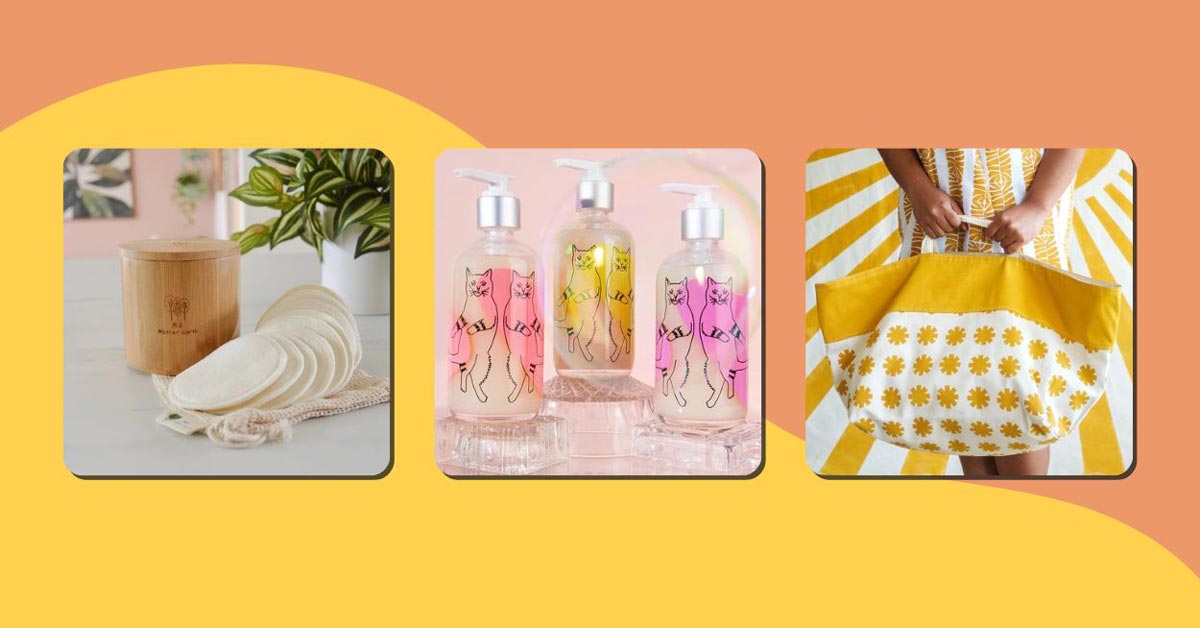Leksi Kostur addressed social media viewers with a bold statement: “I created my own coffin to get over my fear of death.”
While most might have their own existential concerns about the unknown, Kostur wanted to face her feelings head-on — and through her work as a biodesigner.
In a recent TikTok video, Kostur explained that she was in the process of getting her Master’s degree in product design when she lost some people close to her. It inspired her to do her thesis project on green burial.
“I wanted to look at ways of how to actually make death beautiful,” she said. “There’s actually so much beauty in decomposition.”
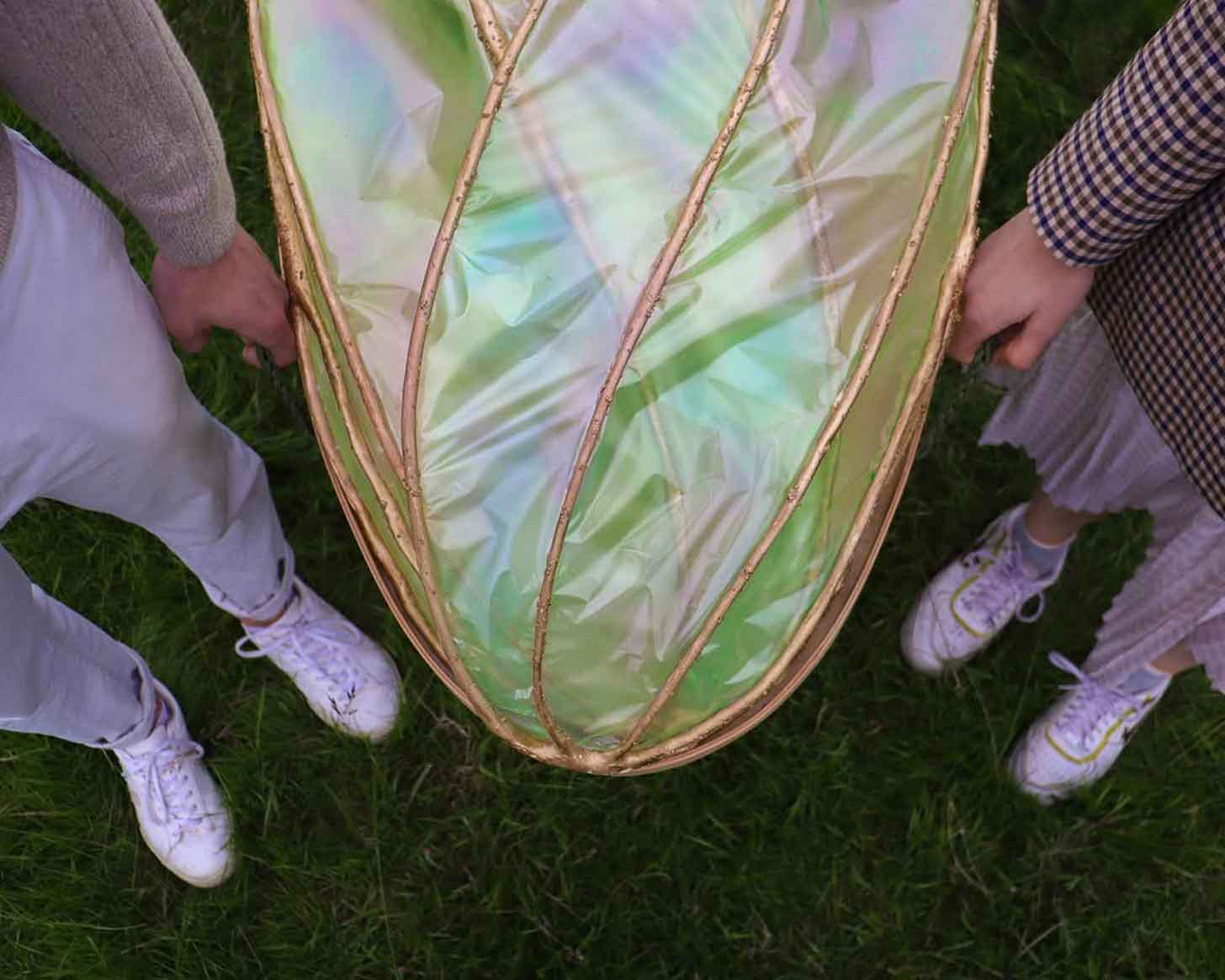
Kostur said she pored over images of primary decomposers — insects, fungi, and bacteria — and took to the beauty found in things like flies’ wings or the colors and shapes of different kinds of fungi and bacteria.
“From these images, I developed an ethereal aesthetic for my funeral,” she said.
But beauty wasn’t the only thing that inspired her.
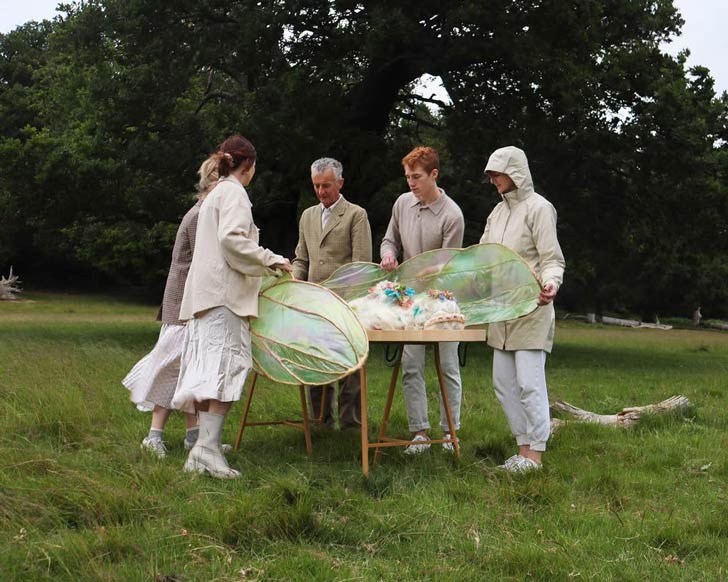
“I needed the whole thing to be biodegradable,” she said.
Conventional burial methods are often harmful to the environment. Resources like lumber, plastic, steel, and other metals are used for caskets or vaults, and embalming fluids contain toxic chemicals like formaldehyde that pollute soil and water as they seep from burial sites. Traditional cemeteries also require a lot of land use without much opportunity for natural degradation.
“Chemicals that we bury leech into the soil and the groundwater, and they end up polluting all the surrounding ecosystems,” Kostur added.
She was determined to find a better way.
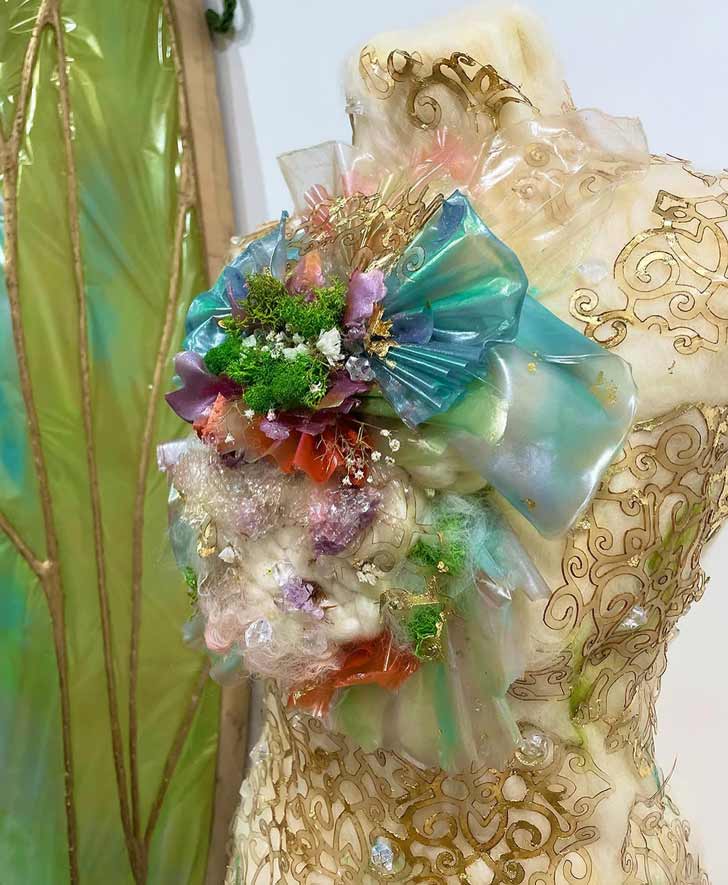
Ultimately, she made her own — a fully compostable, translucent “bioplastic” material made out of seaweed. Creating this material even led Kostur to use it in fashion accessories and wedding floral displays, which is now how she spends most of her time professionally.
But for her coffin, Kostur utilized the material to create something that lent itself to the ritual surrounding death and burial.
“I designed a ritual with these materials where the body is laid on a baseboard and covered with these biomaterial wings. After a procession takes place, the wings are removed and the body is underneath, shrouded in wool and various biodegradable accessories,” Kostur explained.
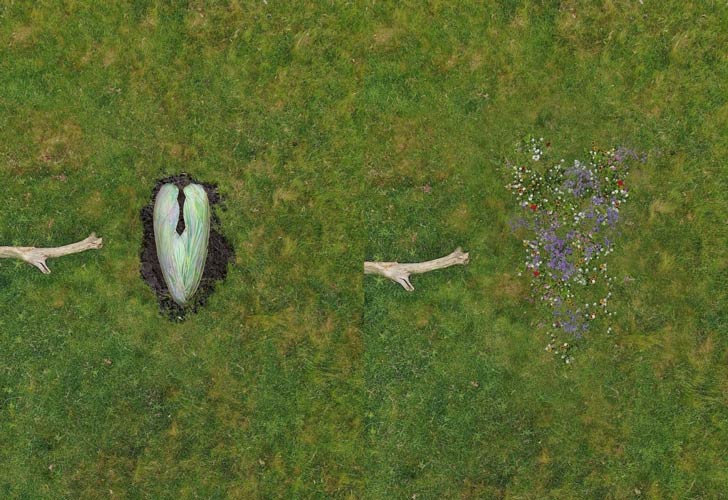
“The body on the baseboard is then lowered into the ground, and the grave is covered. The biomaterial wings are laid on top of the gravesite,” she continued.
Kostur also created another biomaterial for the golden structure of the wings, which contains native wildflower seeds.
“When it rains, and the biodegradable materials start to dissolve, the seeds sprout, and this creates a natural garden at the gravesite.”
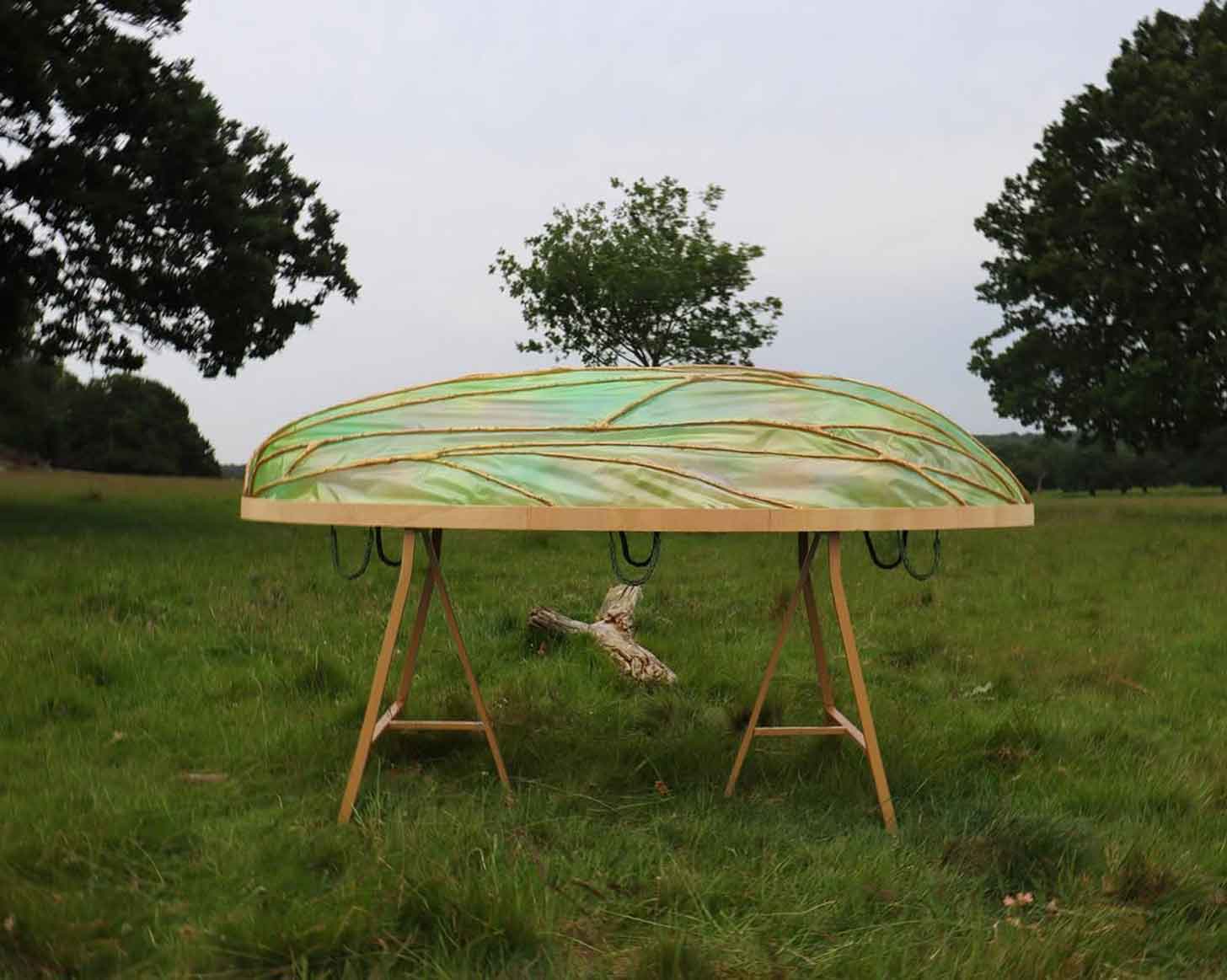
Kostur’s project, titled “Continuum,” was nominated for an international Green Product Award in 2022, and now years later, Kostur still reflects on it as a project that did provide some relief and control over her fear of death.
“Aside from its poetic value, this product contributes to the rewilding of green burial grounds,” a project statement for “Continuum” reads.
“As the gravesite becomes a natural garden, the transition from individual to collective is complete.”
You may also like: This startup recycles pet ashes into artificial reefs to save marine life. Human remains are next
Header image courtesy of Leksi Kostur/Instagram
